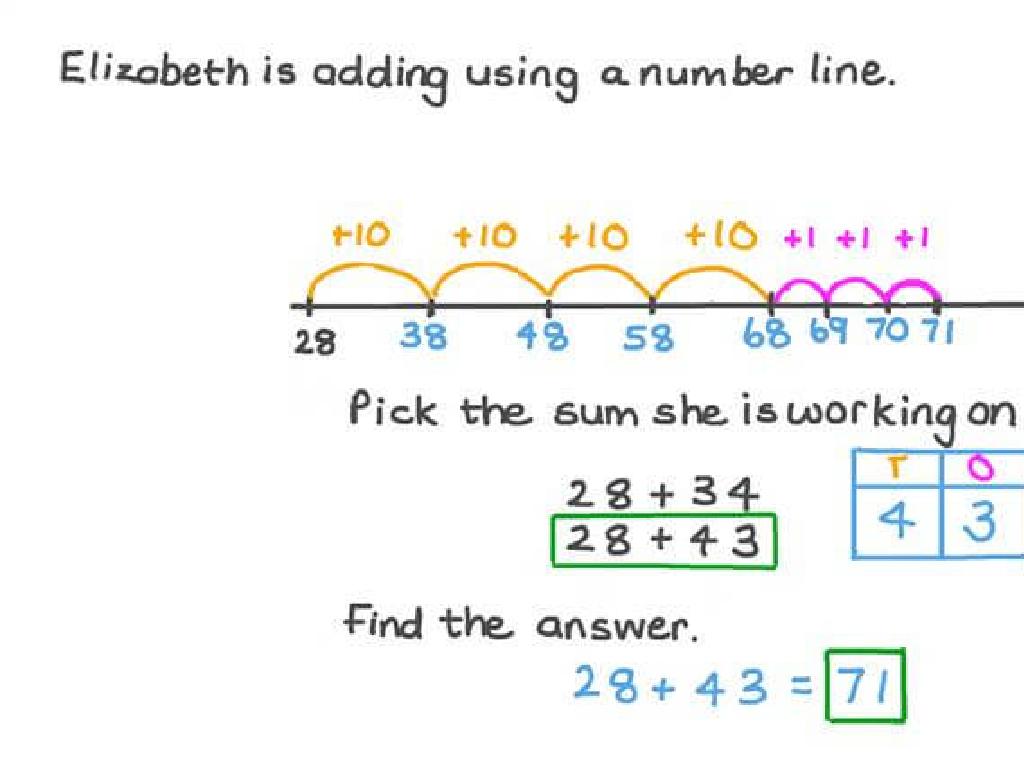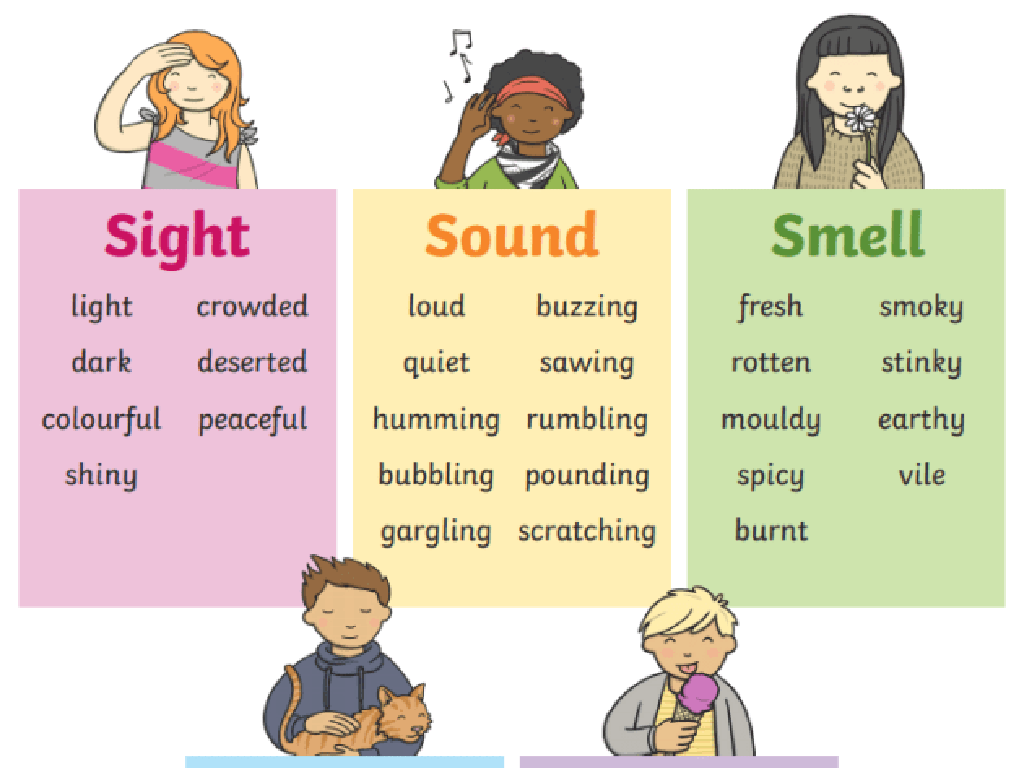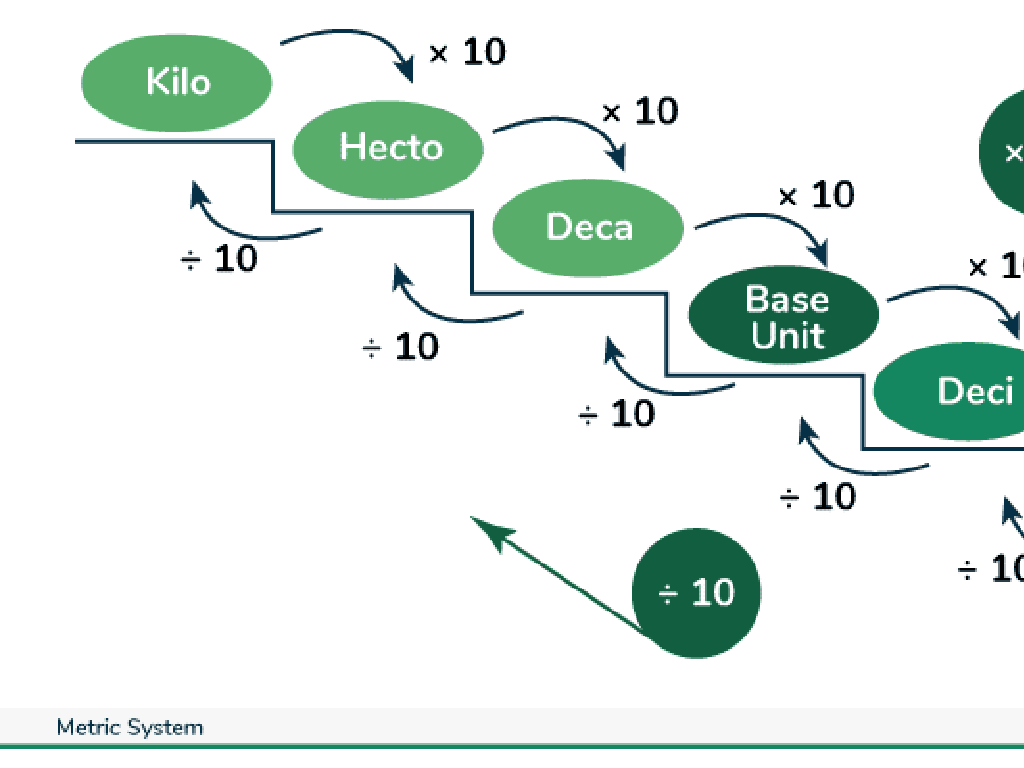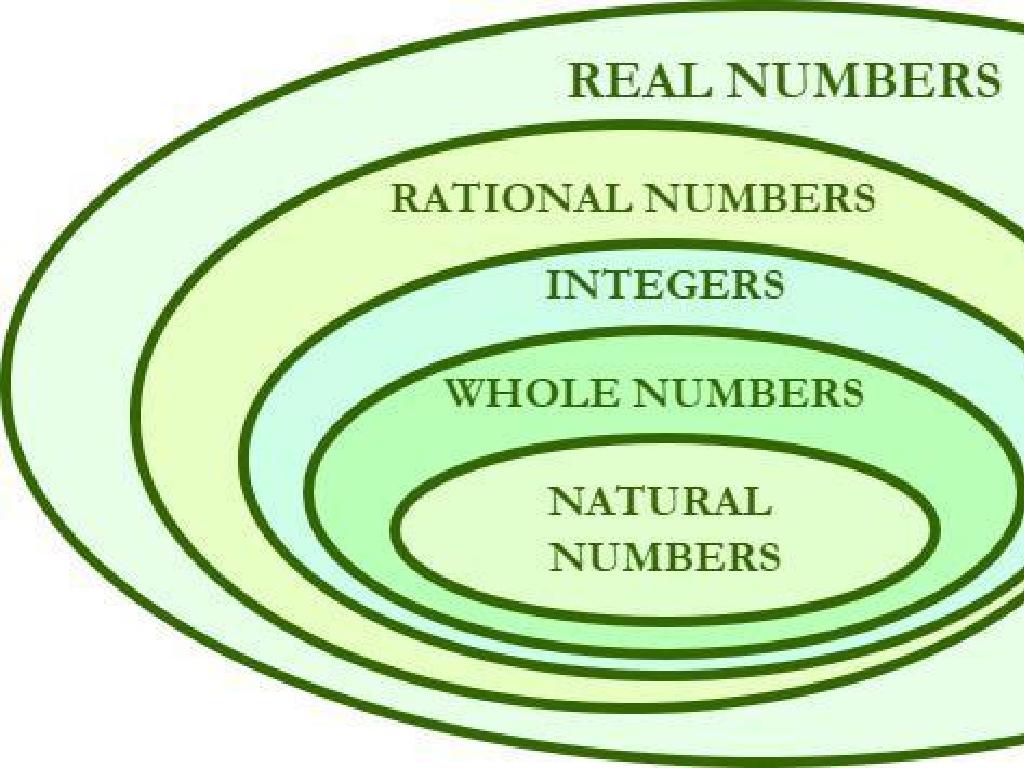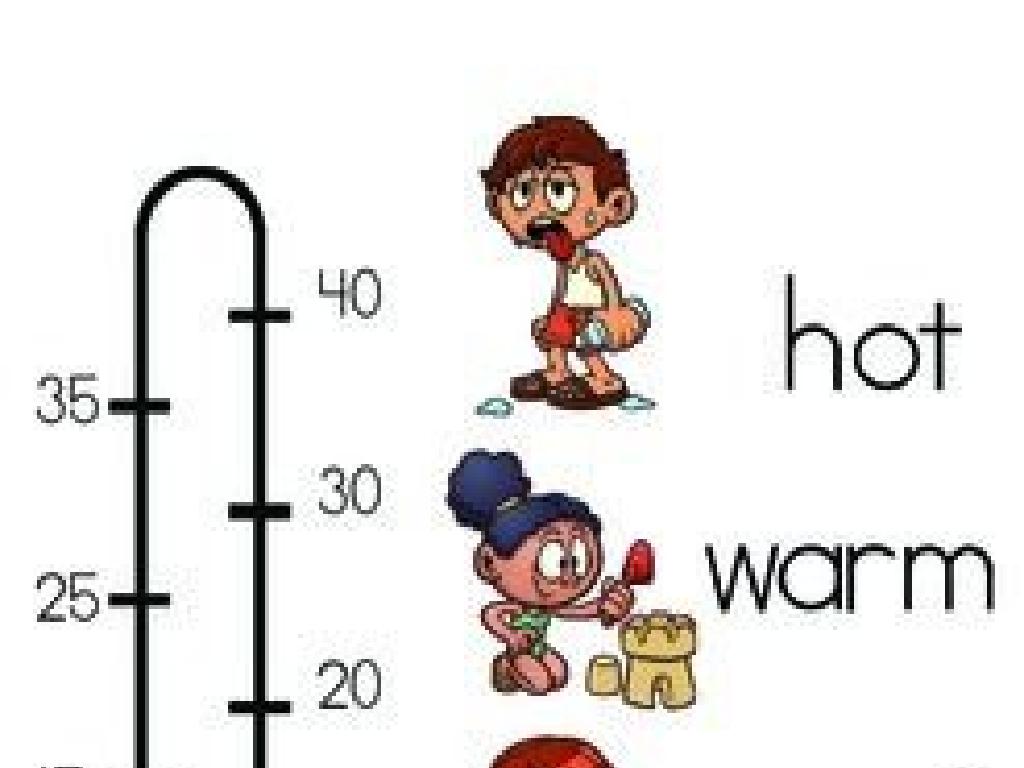Determine The Themes Of Short Stories
Subject: Language arts
Grade: Seventh grade
Topic: Theme
Please LOG IN to download the presentation. Access is available to registered users only.
View More Content
Welcome to Theme Exploration!
– Unveiling a story’s heart
– The central idea or message in a story
– Defining ‘Theme’
– Theme: the underlying message or insight
– Significance of theme
– Themes give depth to literature and can reflect societal values
– Theme vs. Subject
– Subject is the topic, theme is what the story says about the topic
|
This slide introduces the concept of theme in literature, which is essential for understanding the deeper meanings in stories. Begin by explaining that the theme is the underlying message or the ‘heart’ of the story. It’s what the author wants the reader to take away, beyond just the plot. Discuss why identifying the theme is important: it enhances comprehension and appreciation of the text, and allows students to connect literature to broader life lessons and societal issues. Clarify the difference between the subject of a story (what it’s about on the surface) and the theme (what deeper message it conveys). Use examples from well-known short stories to illustrate themes and how they differ from subjects.
Understanding Themes in Short Stories
– Define the concept of Theme
A theme is the central topic or idea explored in a story.
– Theme vs. Main Idea
Main Idea is what the story is about; Theme is the lesson or message.
– Themes as underlying messages
Themes are not directly stated but are implied through characters, plot, and setting.
– Examples of common themes
|
This slide introduces the concept of ‘Theme’ in literature, specifically in short stories. It’s crucial to differentiate between the ‘main idea’ or the plot of the story, and the ‘theme,’ which is the deeper message or insight the author conveys. Themes are often universal, touching on aspects of human experience like love, friendship, courage, or growth. They require readers to look beyond the surface and think critically about the story’s implications. Use examples from well-known fables or short stories to illustrate common themes, such as ‘honesty is the best policy’ or ‘the importance of being true to oneself.’ Encourage students to think about the themes in stories they’ve read and how those themes relate to their own lives.
Identifying Themes in Short Stories
– Look for clues to uncover themes
– Themes emerge from patterns like recurring events or character evolution.
– Recognize examples of common themes
– Friendship, courage, and love are themes that often appear in stories.
– Understand themes may be implied
– Sometimes themes are suggested through plot, characters, and setting, not explicitly stated.
– Analyze character actions and outcomes
– Characters’ decisions and the consequences can reflect the story’s deeper messages.
|
This slide aims to help students understand how to identify themes within short stories. Themes are the central topics or messages that the author wants to convey. They are not always directly stated and can often be inferred through various elements of the story such as plot, characters, and setting. Encourage students to look for patterns or lessons that characters learn, as these can be clues to the theme. Provide examples of common themes and discuss how they can be represented in different ways. Have students practice by analyzing a short story and identifying potential themes based on character actions and the outcomes of the story.
Exploring Themes in Short Stories
– Short stories & themes
– Short stories often convey powerful messages through themes.
– Read a story excerpt
– We’ll read a part of a story together in class.
– Discuss possible themes
– In groups, discuss what message the story conveys.
– Understanding theme significance
– Why is identifying the theme important for interpretation?
|
This slide is aimed at helping students understand the concept of themes within short stories. Begin by explaining how short stories can effectively communicate complex ideas and moral lessons through themes. Then, read an excerpt from a selected short story aloud with the class, or have a student volunteer to read. After reading, break the class into small groups and have them discuss what they think the theme of the story might be, encouraging them to use evidence from the text to support their ideas. Conclude with a discussion on why recognizing the theme is crucial for a deeper understanding of the story and how it relates to the human experience. This activity will enhance analytical thinking and interpretation skills.
Analyzing Themes in Short Stories
– Steps to identify a theme
– Start with the main idea, then look for recurring elements or messages.
– Examine details and patterns
– Details like settings, dialogues, and conflicts reveal themes.
– Observe character challenges
– Challenges often highlight the story’s moral or message.
– Note character changes
– Changes in characters can signify the development of the theme.
|
When analyzing themes, guide students to start by summarizing the story to grasp the main idea. Encourage them to look for repeated imagery, events, or dialogue that might suggest a deeper message. Discuss how the struggles faced by characters often reflect the theme and how characters’ responses to these challenges can reveal different aspects of the theme. Have students consider how characters evolve throughout the story and what these changes say about the underlying message. Use examples from well-known short stories to illustrate these points. For instance, in ‘The Necklace’ by Guy de Maupassant, the theme of the danger of vanity emerges through the protagonist’s challenges and transformation.
Theme vs. Main Idea in Short Stories
– Distinction between theme and main idea
– Main idea: the story’s essence
– It’s the central point or storyline, like a summary.
– Theme: the underlying message
– It’s the moral or lesson, not directly stated but inferred.
– Interactive example on identification
– We’ll analyze a story together to practice distinguishing them.
|
This slide aims to clarify the difference between the main idea and the theme of a story. The main idea is what the story is about on the surface, essentially the plot or the central concept. The theme, on the other hand, is the lesson or message that the reader is meant to take away, which is often not explicitly stated but can be inferred through the characters, setting, and plot. To make this concept interactive and engaging for seventh graders, we will go through an example story together in class. Students will be asked to identify both the main idea and the theme, explaining their reasoning. This activity will help solidify their understanding of these concepts and improve their analytical skills in literature.
Exploring Themes in Short Stories
– Read a story as a class
– Brainstorm possible themes
– What messages or lessons does the story convey?
– Discuss supporting details
– How do characters, settings, and events reveal the theme?
– Reflect on the theme’s significance
|
This slide is designed for a class activity focused on identifying and understanding themes in literature. Start by reading a short story together, ensuring that students are engaged and following along. After reading, facilitate a brainstorming session where students can suggest possible themes they’ve identified. Encourage them to think about the moral or message of the story. Then, lead a discussion on how specific details in the story, such as character actions, setting descriptions, and plot events, support the identified themes. Conclude by reflecting on why the theme is significant and how it relates to real-life experiences or broader societal issues. This activity will help students practice critical thinking and analytical skills by connecting story elements to larger concepts.
Class Activity: Theme Discovery
– Break into small groups
– Each group gets a unique story
– Discuss to find the story’s theme
– Think about the main message or lesson
– Share your theme with the class
– Be ready to explain how you determined it
|
This activity is designed to foster collaborative learning and critical thinking as students work together to identify the theme of a short story. Divide the class into small groups, ensuring a mix of abilities in each. Provide a different short story to each group, preferably with varied themes to encourage diverse thinking. Guide the students to look for the underlying message or lesson in the story, considering characters’ actions, conflicts, and resolutions. After discussion, each group will share their identified theme with the class, explaining the reasoning behind their choice. For the teacher: prepare a list of short stories with clear but varied themes, be ready to assist groups that struggle, and encourage respectful listening as groups share their findings.
Sharing Our Discoveries: Exploring Themes
– Groups present their themes
– Class votes on top theme presentation
– Discuss theme discovery process
– How did the context, characters, and plot help you?
– Reflect on varying perspectives
– Understand that different readers may identify different themes
|
This slide is designed to facilitate a collaborative and interactive class activity where students will share the themes they have identified in their assigned short stories. Each group will present their findings to the class, who will then vote on the most compelling theme presentation. This activity encourages students to engage critically with literature and to appreciate the process of theme discovery. It’s important to guide the discussion towards understanding how each group interpreted the text and arrived at their theme, considering elements like context, character development, and plot. Encourage students to reflect on how different perspectives can lead to different interpretations of the same story. This will help them understand the subjective nature of literary analysis and the importance of supporting their ideas with evidence from the text.
Wrapping Up: The Power of Theme
– Recap today’s theme discussion
– Understand theme significance
– Themes give deeper meaning to stories
– Homework: Craft a themed story
– Write a short story incorporating a theme we discussed
– Share and discuss next class
– Be prepared to present your story and its theme
|
As we conclude today’s lesson on themes in literature, it’s crucial to reinforce the understanding that a theme is the central, deeper meaning or message of a story. It’s what the author wants the reader to take away. For homework, students are tasked with writing their own short stories that revolve around a clear theme. This exercise will help them apply what they’ve learned and think critically about how themes shape narratives. In the next class, students will have the opportunity to share their stories and discuss the themes they’ve chosen to explore. This will not only enhance their comprehension of the concept but also their storytelling and analytical skills.

